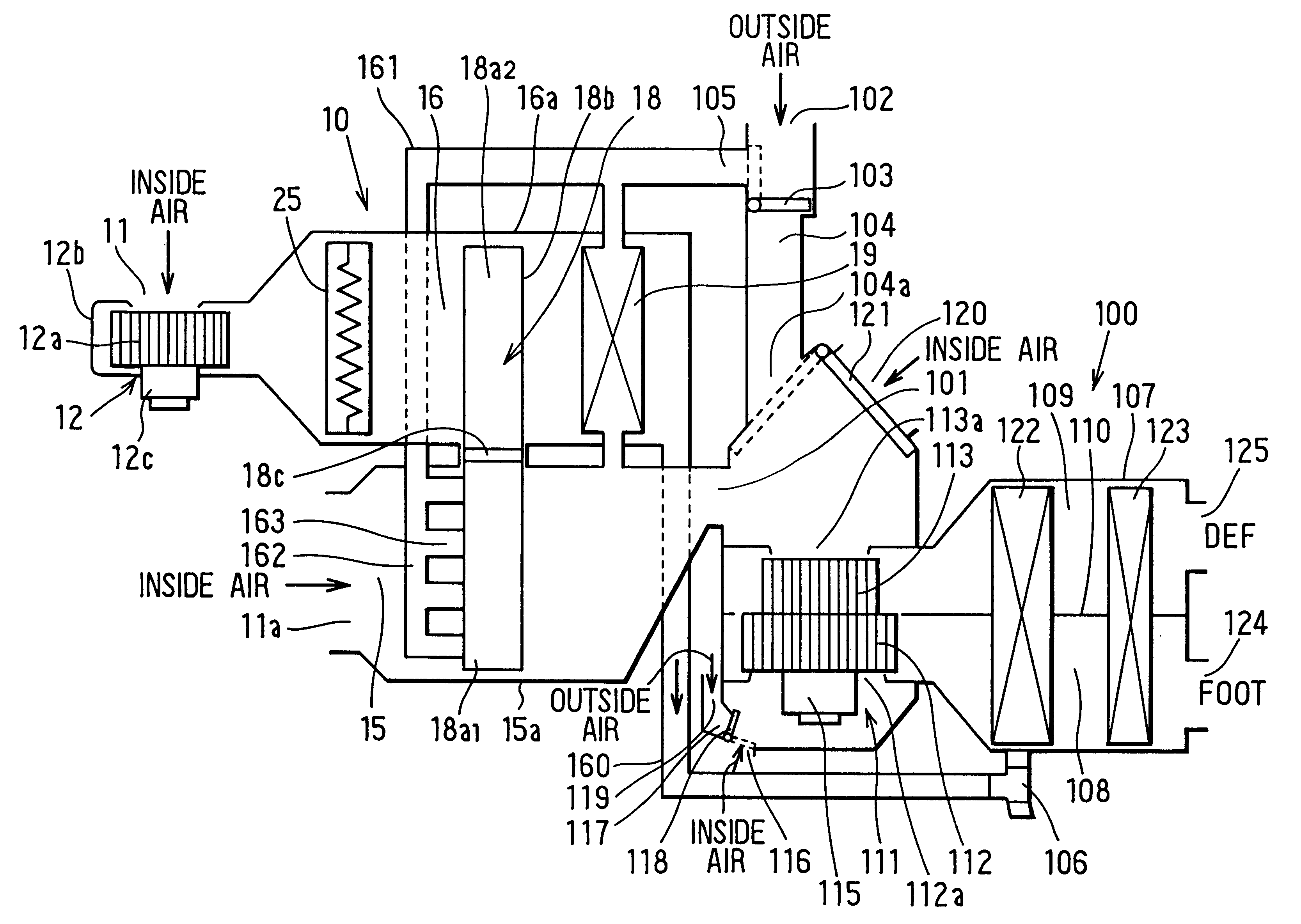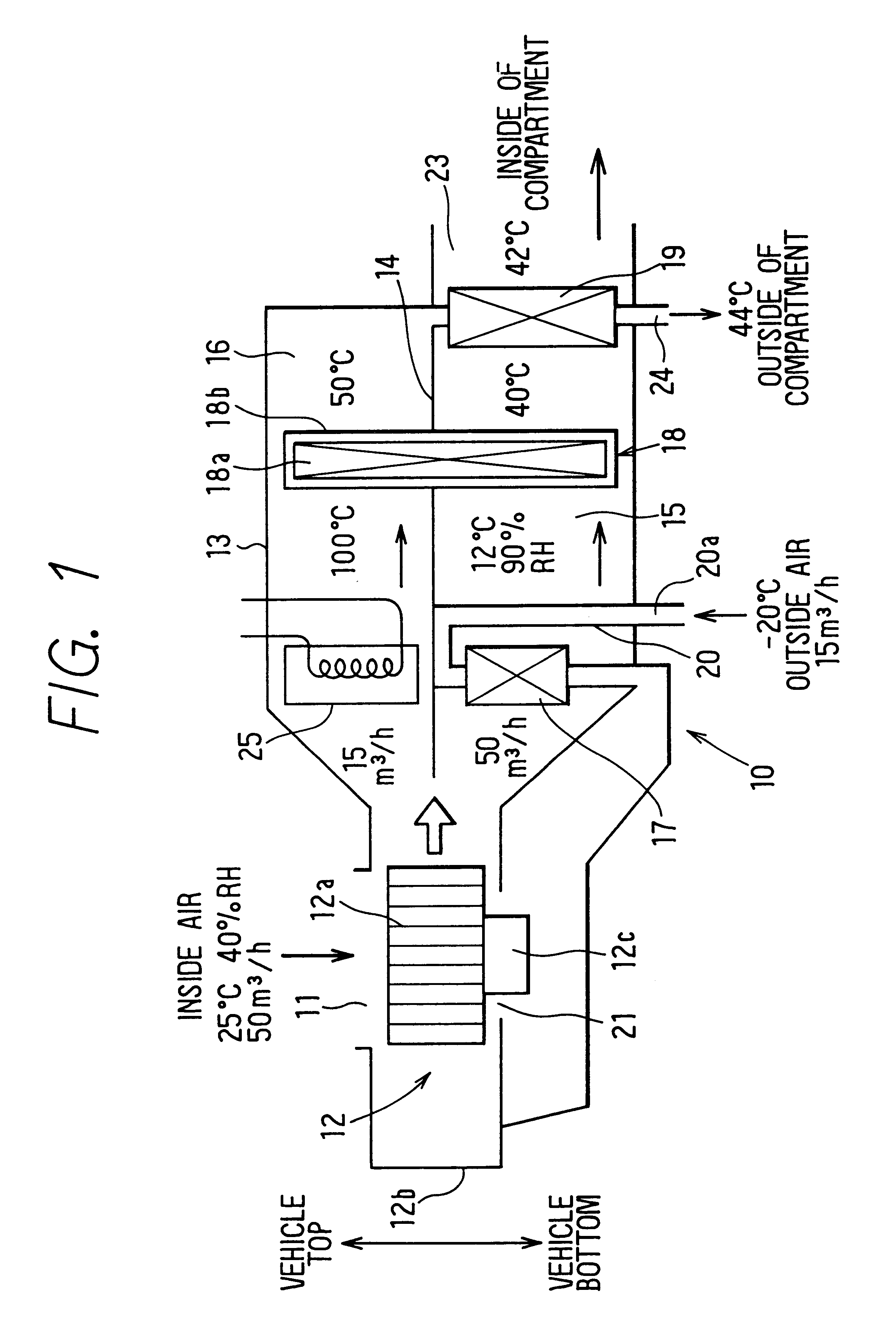Motor vehicle dehumidifier with drying agent and drying agent regenerative control
- Summary
- Abstract
- Description
- Claims
- Application Information
AI Technical Summary
Benefits of technology
Problems solved by technology
Method used
Image
Examples
Embodiment Construction
)
The invention is not limited to the preferred embodiments described above, and various changes are possible. For example:
[1] Although in the first through third preferred embodiments described above the dehumidifier 10 is constructed independently of the ducting of the air-conditioning system, alternatively, as in the fourth through sixth preferred embodiments and as described in Japanese Patent Application Laid-open No. H.9-156349, the dehumidifier 10 may be integrally built in to the ducting of the air-conditioning system.
Conversely, whereas in the fourth preferred embodiment the dehumidifier 10 is built in to the ducting of the air-conditioning system, alternatively the dehumidifier 10 may be constructed independently of the ducting of the air-conditioning system in a position such as behind the passenger compartment.
[2] Although in all of the first through sixth preferred embodiments described above the drying agent unit 18 is of a rotating type for carrying out regeneration of...
PUM
 Login to View More
Login to View More Abstract
Description
Claims
Application Information
 Login to View More
Login to View More - R&D
- Intellectual Property
- Life Sciences
- Materials
- Tech Scout
- Unparalleled Data Quality
- Higher Quality Content
- 60% Fewer Hallucinations
Browse by: Latest US Patents, China's latest patents, Technical Efficacy Thesaurus, Application Domain, Technology Topic, Popular Technical Reports.
© 2025 PatSnap. All rights reserved.Legal|Privacy policy|Modern Slavery Act Transparency Statement|Sitemap|About US| Contact US: help@patsnap.com



